Purple Trillium (Trillium erectum), also known as Purple Wakerobin, Red Trillium, or Stinking Benjamin, is a perennial plant native to the forest floors of eastern North America. Belonging to the Melanthiaceae family, this unique species is easily recognized by its distinctive groupings of three: three pointed leaves and three-petaled flowers. While admired for its striking appearance, the plant emits a smell resembling rotting meat, a natural adaptation to attract pollinating flies. It’s worth noting that Purple Trillium is mildly toxic to humans, so caution is advised when handling it.
| Common name | Purple Trillium, Purple Wakerobin, Red Trillium, Red Wakerobin, Stinking Benjamin, Stinking Willie, Wake-robin, Wake Robin Trillium |
| Botanical name | Trillium erectum |
| Family | Melanthiaceae |
| Species | erectum |
| Origin | North America |
| Life cycle | Perennial |
| Plant type | Herbaceous Perennial |
| Hardiness zone | 4, 5, 6, 7 |
| Sunlight | Dappled Sunlight |
| Maintenance | Medium |
| Soil condition | Clay |
| Soil ph | Acid |
| Drainage | Well-Drained |
| Growth rate | Slow |
| Harvest time | Summer |
| Flowering period | Spring |
| Height | 8 in. – 1 ft. 6 in. |
| Flower color | Gold, Yellow |
| Leaf color | Green |
| Fruit color | Burgundy, Red |
| Stem color | Green |
| Fruit type | Berry |
| Leaf benefit | Showy |
| Flower benefit | Showy |
| Garden style | Native Garden |
| Uses | Naturalized Area |
I. Appearance and Characteristics
Trillium erectum, the red trillium, also known as wake robin, purple trillium, bethroot, or stinking benjamin, is a species of flowering plant in the family Melanthiaceae. The plant takes its common name “wake robin” by analogy with the European robin, which has a red breast heralding spring. Likewise Trillium erectum is a spring ephemeral plant whose life-cycle is synchronized with that of the forests in which it lives. It is native to the eastern United States and eastern Canada from northern Georgia to Quebec and New Brunswick.
Trillium erectum was first described by the Swedish botanist Carl Linnaeus in 1753. The specific epithet erectum means “upright, erect”, a reference to the erect pedicel of some forms of this species. In many populations, however, the pedicel leans or declines, sometimes declining beneath the leaves, making the name somewhat inappropriate.
In 1803 André Michaux introduced the name Trillium rhomboideum to describe a form of T. erectum with black fruit in “the high mountains of North Carolina”. The specific epithet rhomboideum refers to the broadly rhombic leaves of this (and all) forms of T. erectum. Michaux also described Trillium rhomboideum var. atropurpureum, a variety with large, dark purple petals. A decade later in 1813, Frederick Traugott Pursh referred to Michaux’s variety more simply as Trillium erectum var. atropurpureum. Perhaps unaware of these taxonomic developments, other botanists subsequently described Trillium atropurpureum. The epithet atropurpureum means “dark-purple coloured”, a reference to the petal color of certain forms of T. erectum. Indeed, in some locales T. erectum is commonly known as the purple trillium.
Trillium erectum is a perennial, herbaceous, flowering plant that persists by means of an underground rhizome. Like all trilliums, it has a whorl of three bracts (leaves) and a single trimerous flower with three sepals, three petals, two whorls of three stamens each, and three carpels (fused into a single ovary with three stigmas). It grows to about 40 cm (16 in) in height with a spread of 30 cm (12 in). The petals are dark reddish brown, maroon, purple, pale yellow, or white. The ovary is dark purple to maroon regardless of petal color. If the flower is successfully pollinated, the petals wither, leaving behind a fruit that ripens to a dark red berry-like capsule, 1 to 1.5 centimeters long.
Trillium erectum is a carrion-scented flower. It produces fetid or putrid odors purported to attract carrion fly and beetle pollinators. The fetid odor is described as that of a wet dog. The common name stinking benjamin refers to this characteristic of the plant. “Benjamin” is a corruption of the word benzoin, which itself is a corruption of the word “benjoin”, a plant-based organic compound used in the manufacture of perfume. Despite the origins of the common name, the chemical basis of carrion-scented flowers is not well understood.
Trillium erectum can tolerate extreme cold in winter, surviving temperatures down to −35 °C (−31 °F).
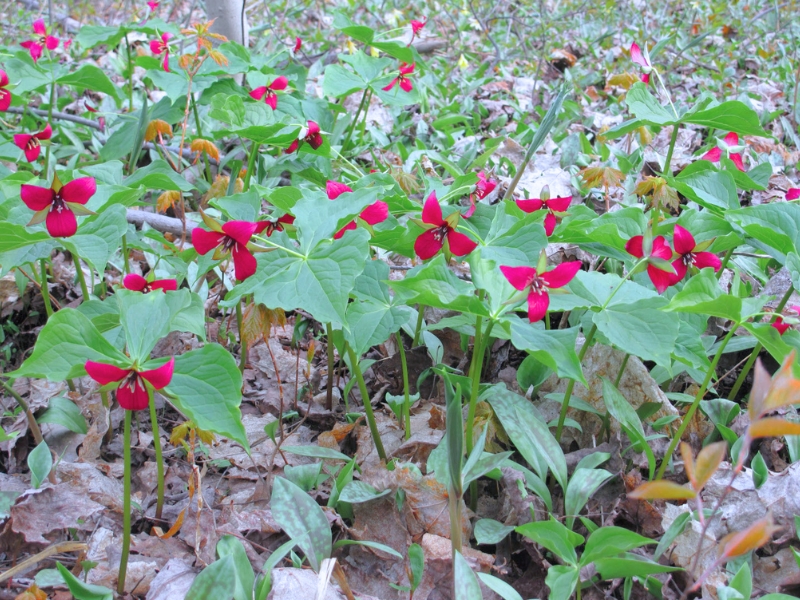
II. How to Grow and Care
Sunlight
In nature, red trillium grows on forest floors, in valleys, or in rock cracks in middle- and high-altitude areas. It is a shade-loving plant. When grown in a garden, it needs a shaded environment, such as under trees or on the shady side of buildings to avoid harsh, direct sunlight. Blazing light exposure can cause it to wither.
Temperature
Red trillium originates from North America and East Asia and like cool, moist habitats. It grows well in an environment with a temperature range of 8 to 12 ℃ and doesn’t tolerate high temperatures. It likes moisture and is not drought-resistant, and it prefers air humidity at 75% – 90%.
Watering
Thriving in the moist, well-drained soils of temperate forests, red trillium has adapted to the consistent moisture levels found in its native habitat. This species exhibits a preference for moderate humidity and demonstrates a balanced approach to water retention. It requires watering every week to maintain its health. Typically grown outdoors due to its affinity for natural forest conditions, red trillium is sensitive to seasonal changes which can influence its watering needs, particularly during its active growing season when moisture is crucial.
Soil
Red trillium likes loose, fertile, moist, slightly acidic soil with good drainage. The ideal pH value range is 5.0-6.5, and shouldn’t exceed 7.3. If the soil is barren or has poor air permeability, you can improve it by mixing in a small amount of organic fertilizer.
Fertilizing
To bolster red trillium’s growth and flowering, apply a balanced fertilizer in early spring—as growth resumes. During blooming, a high phosphorus fertilizer can encourage vibrant blossoms. Every 3-4 weeks, use fertilizers sparingly to prevent root burn, and avoid over-fertilizing which can stress red trillium. Adjust fertilization with seasons, reducing in the dormant fall and winter. Practical tip: Dilute fertilizer to half-strength to safeguard against overfeeding.
Planting Instructions
Plant Trillium erectum in the late summer months in deep, well-draining soil. Planting in the late summer gives your plant the best chance possible of establishing rhizomes – which can sometimes be tricky. Ideally, you will plant your Trillium erectum in a raised bed; you can do so by creating a mound 10 cm above the normal soil level. Position Trillium erectum between shrubs and trees in a spot with partial shade.
The most important thing to remember when planting Trillium erectum is that it needs moist, well-draining soil. Raised beds are the perfect solution, combined with a mixture of soil, sand and loam
Find a position between other shrubs and trees that is exposed to a maximum of 4 hours of sun per day. This ensures that your Trillium will benefit from the shelter and minimum exposure to the elements
Dig a hole for the roots that is at least 7cm deep and bury the root ball in the soil
Back fill then water thoroughly after planting and mulch once a year in the spring
Pruning
Re-plant your parent as soon as possible and add your division cutting to a pot full of cuttings compost. You can also add slow-release fertilizer to the compost to encourage healthy growth. If you have multiple cuttings, give each their own pot to establish roots in. Bring the cuttings indoors into a controlled, warm and dry environment away from direct sunlight.
As your division cuttings grow, continue to re-pot into bigger pots until they are ready for transplantation outdoors. The best time to do this is in the late summer.
Propagation
The most effective way to propagate your Trillium erectum is by division. You can also propagate from seed, although this can take 5-7 years. So, division is a much quicker and more efficient method of growing this plant, particularly as it takes so long to multiply.
Start by gently pulling out a healthy parent plant once the flowering season is over. Using clean and disinfected scissors or a knife, pry a root clump away from the parent. Do not cut off more than ⅓ of the parent plant in the process.
Re-plant your parent as soon as possible and add your division cutting to a pot full of cuttings compost. You can also add slow-release fertilizer to the compost to encourage healthy growth. If you have multiple cuttings, give each their own pot to establish roots in. Bring the cuttings indoors into a controlled, warm and dry environment away from direct sunlight.
As your division cuttings grow, continue to re-pot into bigger pots until they are ready for transplantation outdoors. The best time to do this is in the late summer.
Repotting
To foster healthy growth, repot red trillium every 2-3 years in spring as it emerges from dormancy. This woodland perennial prefers a sizable pot for its deep rhizomes. During repotting, use a well-draining soil mix to mirror its natural habitat. Post-repotting, keep red trillium’s soil uniformly moist and provide shade, emulating forest conditions for optimal recovery.
Overwintering
As a fully hardy perennial, Trillium erectum needs minimal cold protection. It can survive in temperatures as low as -35°C and will die back from October.
Pests and Diseases
Trillium erectum does not suffer from any major diseases, but slugs and snails can cause problems. Look out for irregularly shaped holes in the leaves and silver slimy trails. Root rot can also be an issue – this is caused by overwatering and stops the plant from getting the oxygen it needs. Plant in well-draining soil to prevent root rot.
III. Uses and Benefits
The root of the red trillium was used by various indigenous peoples of North America as an aid in childbirth, hence the common name birthwort or birthroot (which is sometimes corrupted to bethroot). Root tea was used for menstrual disorders, to induce childbirth, and to aid in labor. The Cherokee peoples used a poultice of the whole plant to treat tumors, inflammation, and ulcers.
The leaves contain calcium oxalate crystals and crystal raphide, and should not be consumed by humans.
Trillium erectum is cultivated as a flowering ornamental plant. Although not as showy as T. grandiflorum, the flowers of some forms of T. erectum can be quite striking, especially since it tends to form large clumps. It has received the Award of Garden Merit from the Royal Horticultural Society.
IV. Harvesting and Storage
10-14 weeks after red trillium blooms, when the fruits turn brown, it’s time to harvest the seeds for sowing. Pick the fruits off the plant, squeeze lightly to crack them open, and find the ripe brown seeds inside. The seeds can be sown right away or placed in moist peat soil for refrigerated storage.
Find Where to Buy the Best Red Trillium (Trillium erectum)



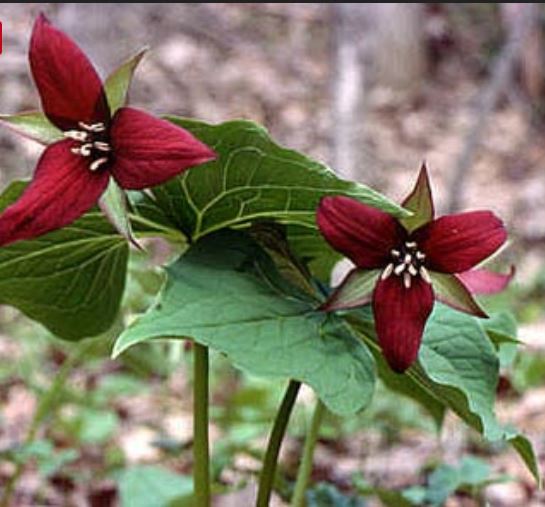

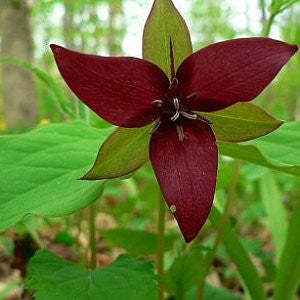
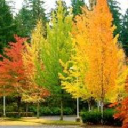
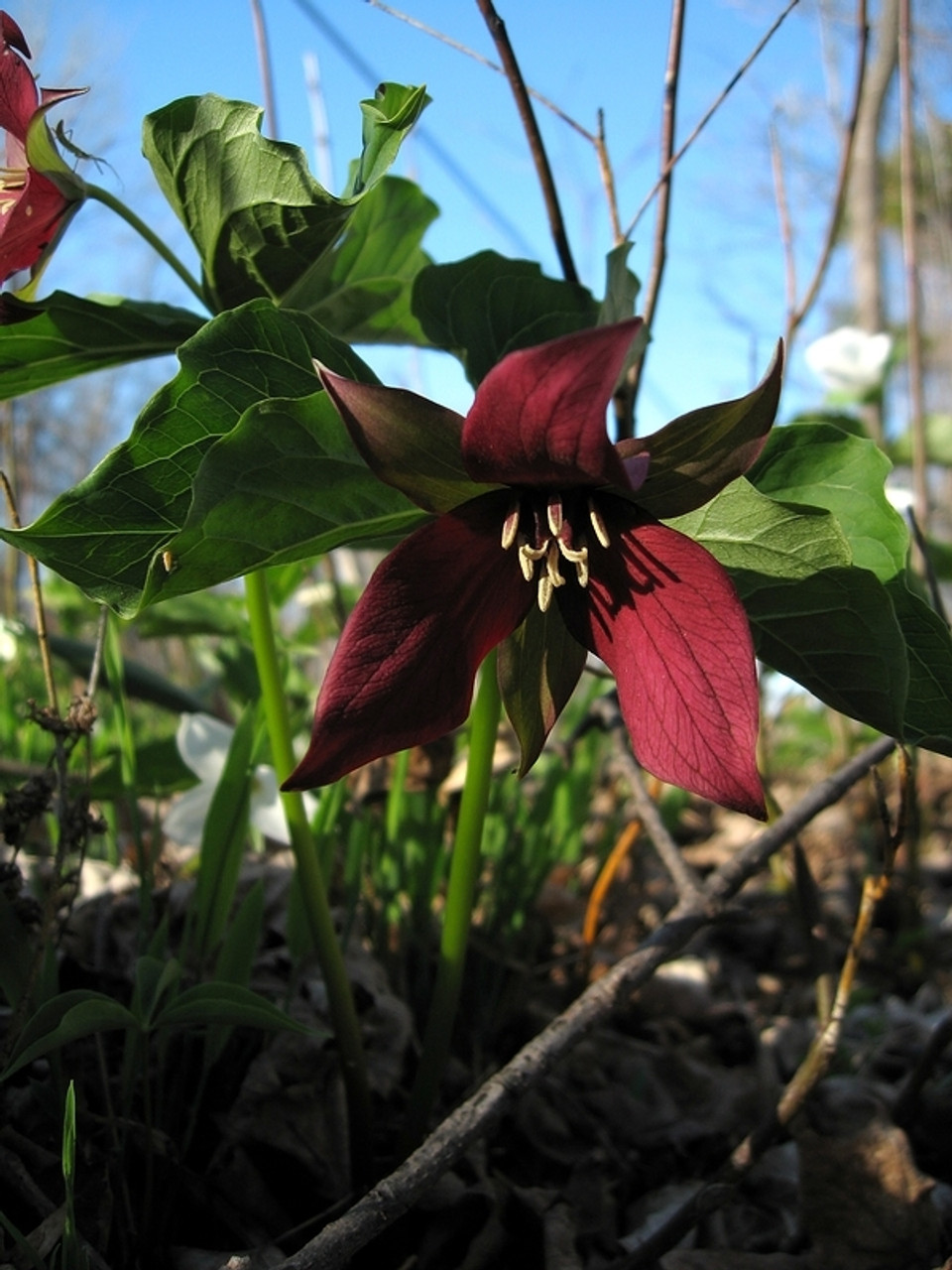

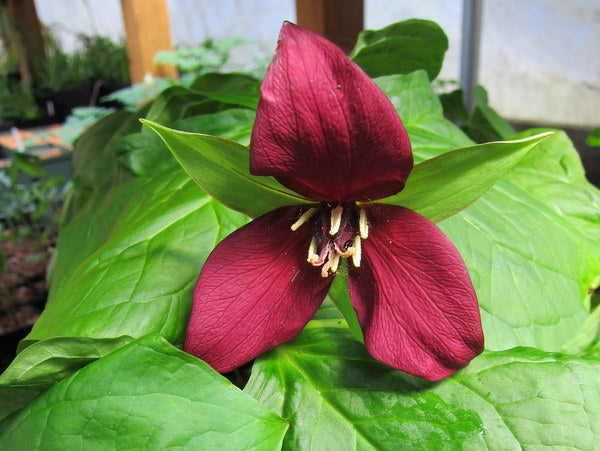
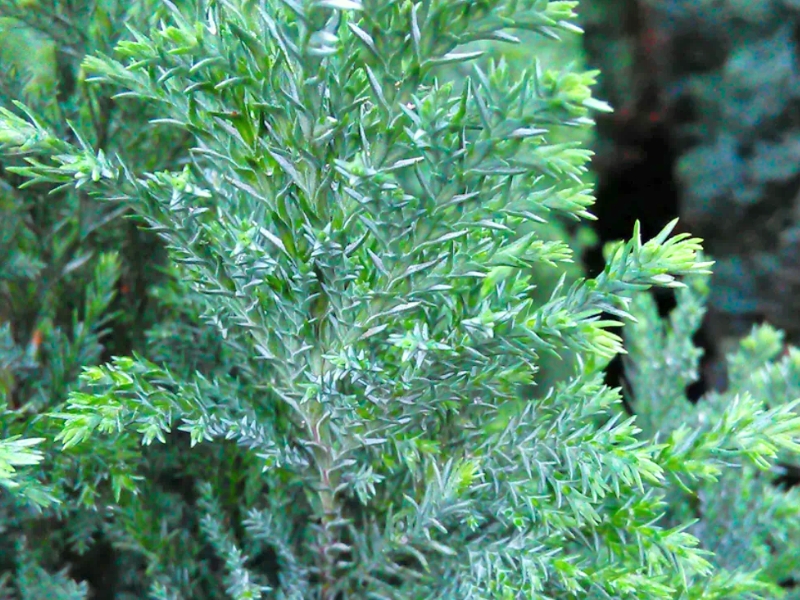
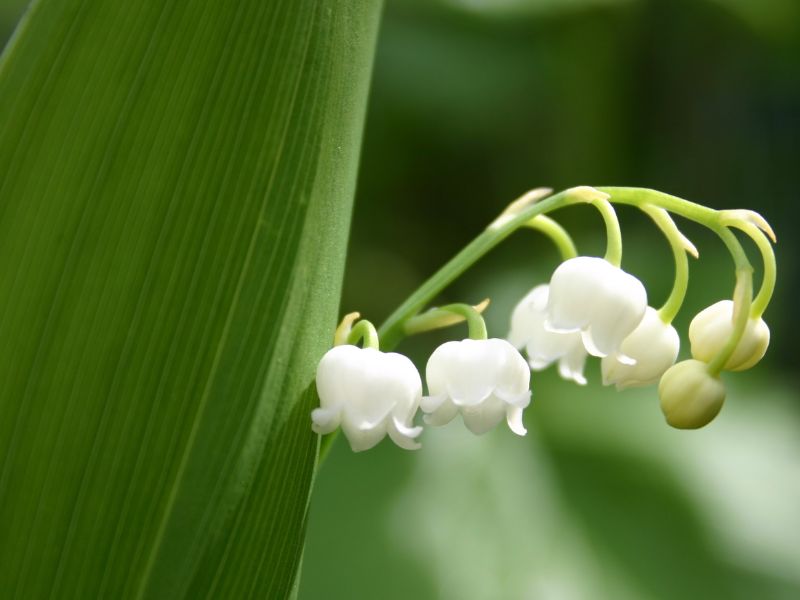
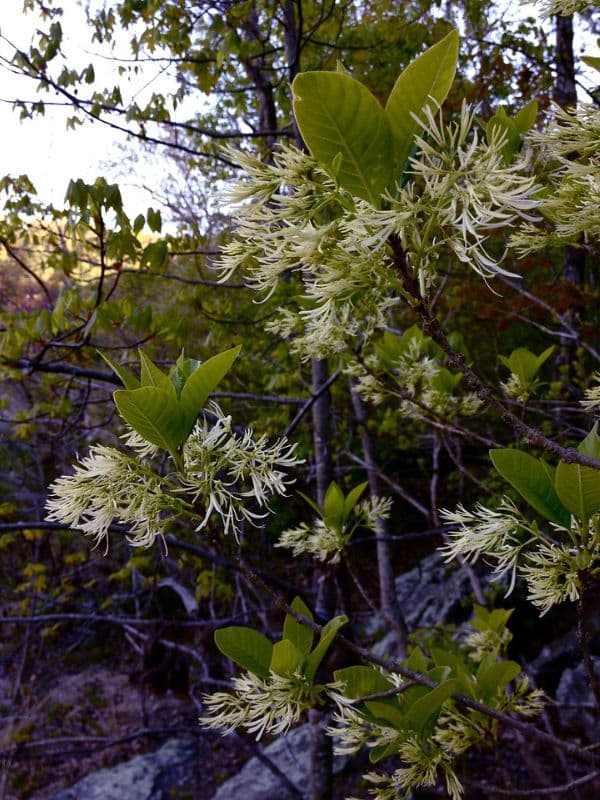
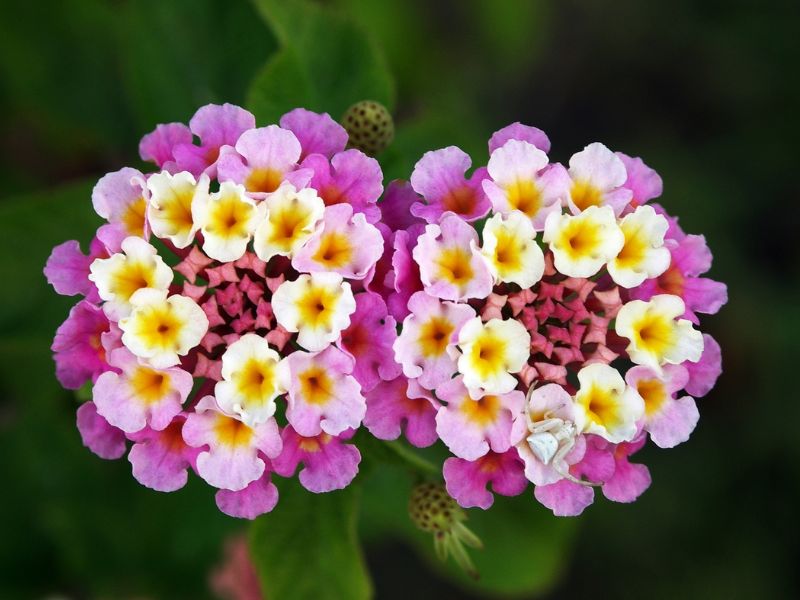
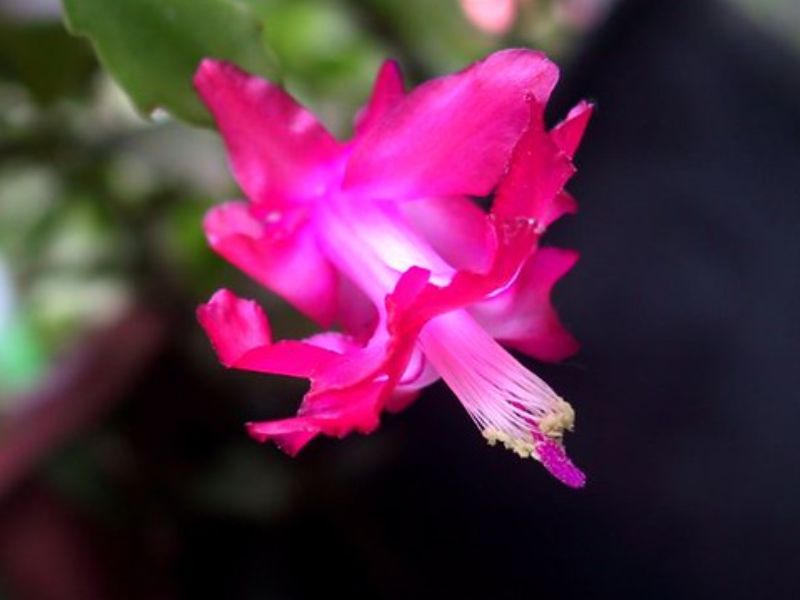
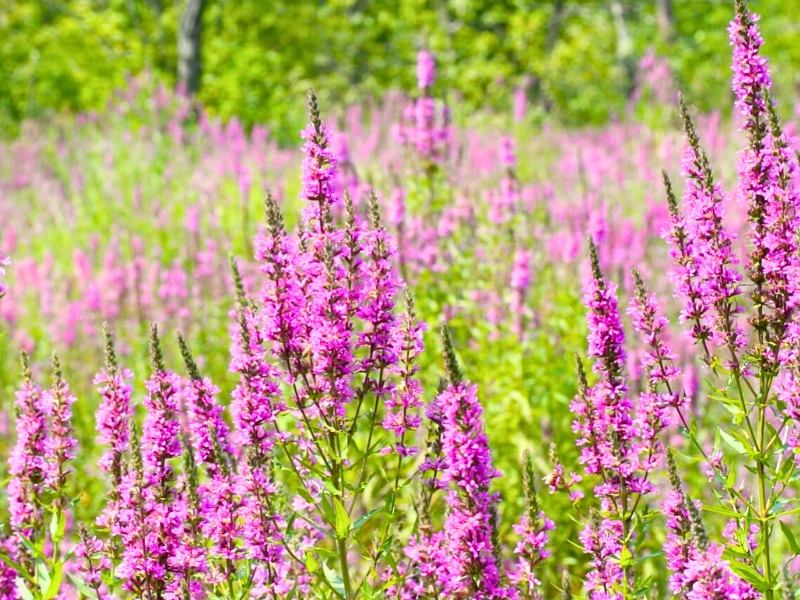
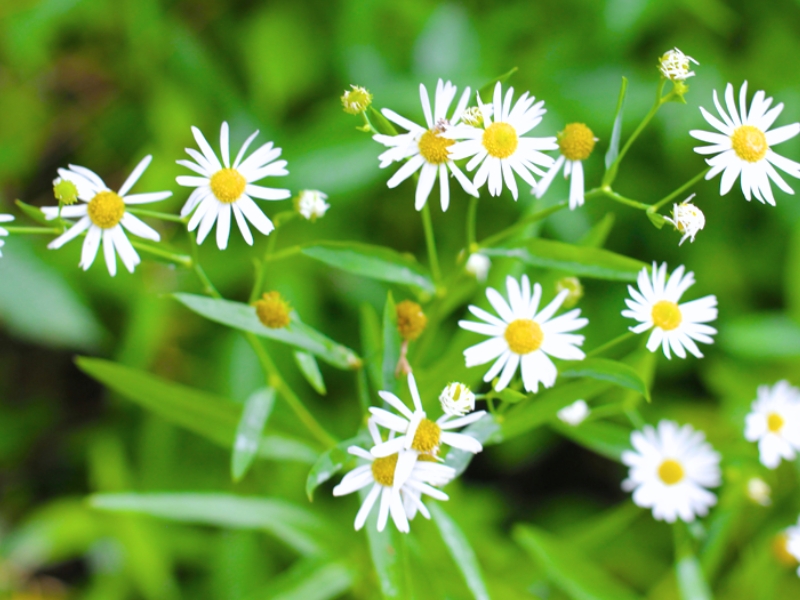
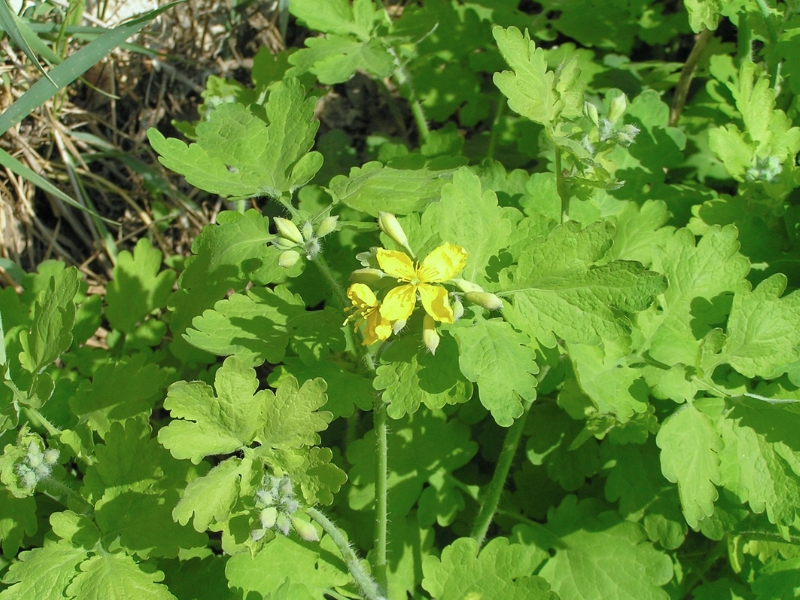
Leave a Reply